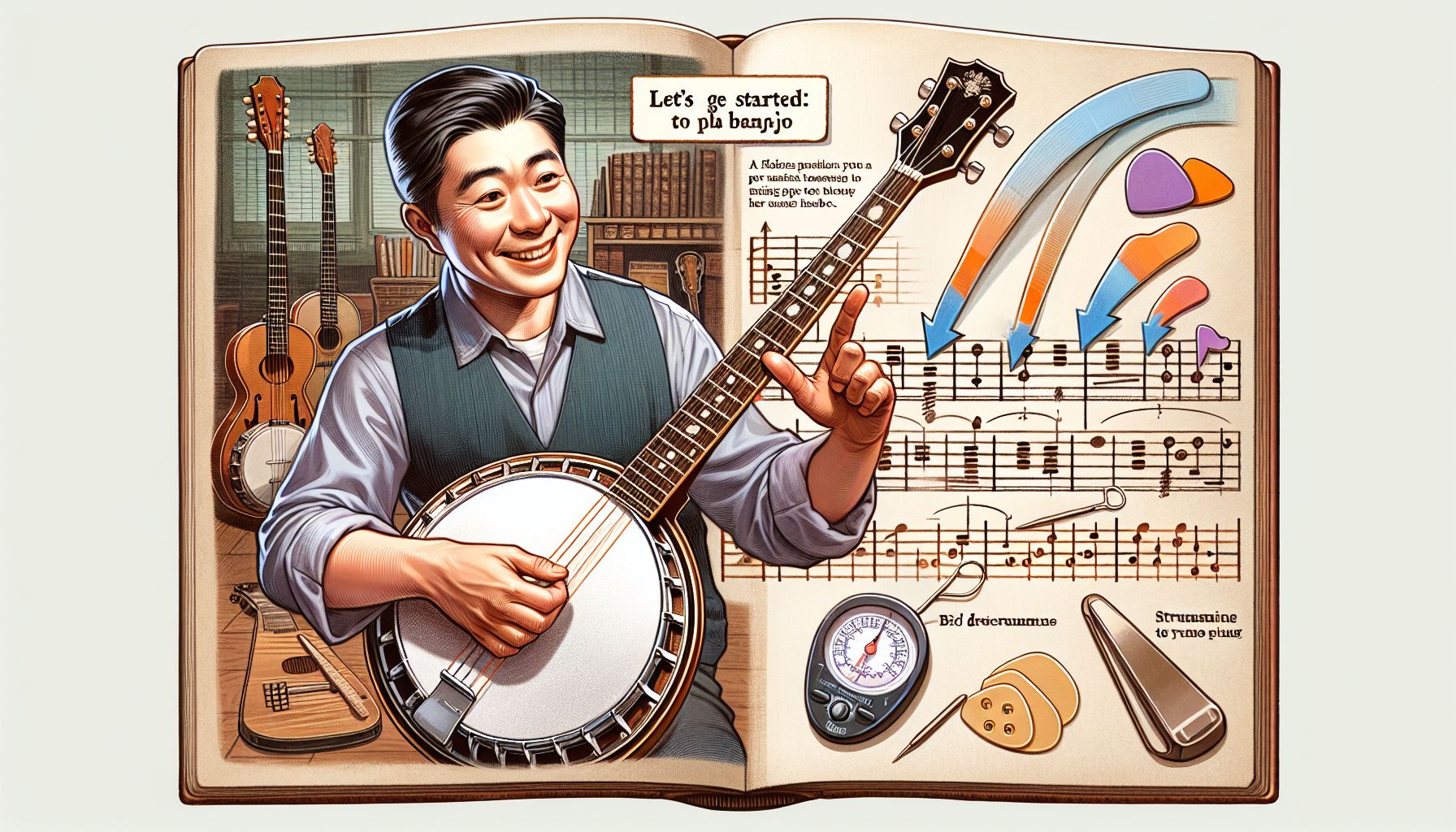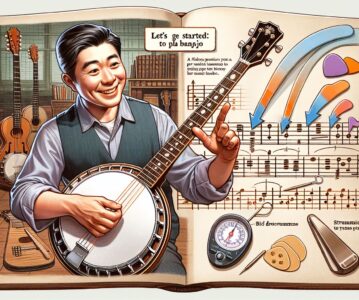Are you interested in learning how to play the banjo but don’t know where to start? Look no further! In this beginner’s guide, we will walk you through the basics of banjo playing, specifically focusing on the 5 string banjo. So grab your banjo and let’s get started!
Introduction to the Banjo
The banjo is a versatile and fun instrument to play, with a unique sound that is sure to grab your attention. It is commonly used in bluegrass, folk, and country music, but can also be found in other genres as well. The most common type of banjo is the 5 string banjo, which consists of four strings that are tuned to a specific pitch, and a fifth string that is typically shorter and is used for playing melodic runs and fills.
Getting to Know Your Banjo
Before you start playing, it’s important to familiarize yourself with the different parts of the banjo. The headstock is where the tuning pegs are located, which you will use to tune the strings. The neck of the banjo is where you will place your fingers to play different notes and chords. The body of the banjo contains the pot, the resonator, and the bridge, which all work together to create the banjo’s unique sound.
Tuning Your Banjo
One of the most important steps in learning to play the banjo is tuning your instrument. The most common tuning for a 5 string banjo is open G tuning, which consists of the notes G-B-D-G-B. You can use an electronic tuner or a piano to help you tune your banjo to the correct pitch.
Learning the Basics
Once your banjo is in tune, it’s time to start playing! The easiest way to get started is by learning some basic chords and picking patterns. Chords are a group of notes played together to create harmony, while picking patterns refer to the way you pluck the strings to create a specific rhythm. Practice switching between different chords and picking patterns to improve your dexterity and timing.
Practicing Regularly
Like any musical instrument, learning to play the banjo takes time and practice. Set aside time each day to practice your banjo playing, even if it’s just for a few minutes. Consistent practice will help you improve your skills and progress more quickly.
Finding Resources
There are many resources available to help you learn to play the banjo, including online tutorials, instructional books, and in-person lessons. Take advantage of these resources to expand your knowledge and improve your playing. Additionally, joining a banjo club or community can provide you with support and encouragement from fellow banjo enthusiasts.
Conclusion
Playing the banjo can be a rewarding and enjoyable experience, especially for beginners. With a little patience and dedication, you can learn to play the banjo like a pro. Remember to start with the basics, practice regularly, and seek out resources to help you improve. So pick up your banjo and start strumming away – happy playing!


